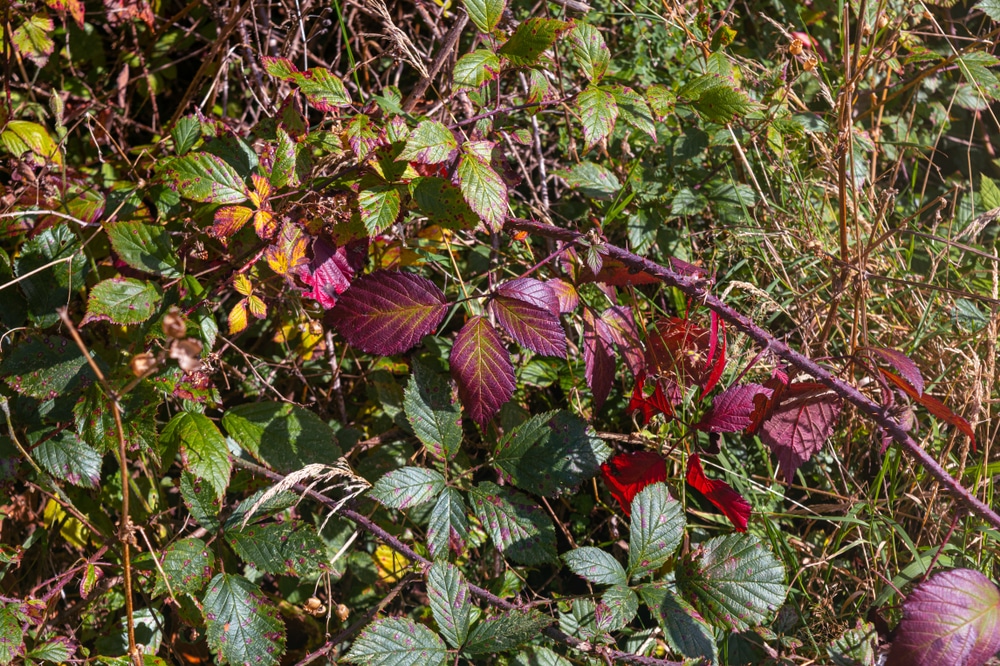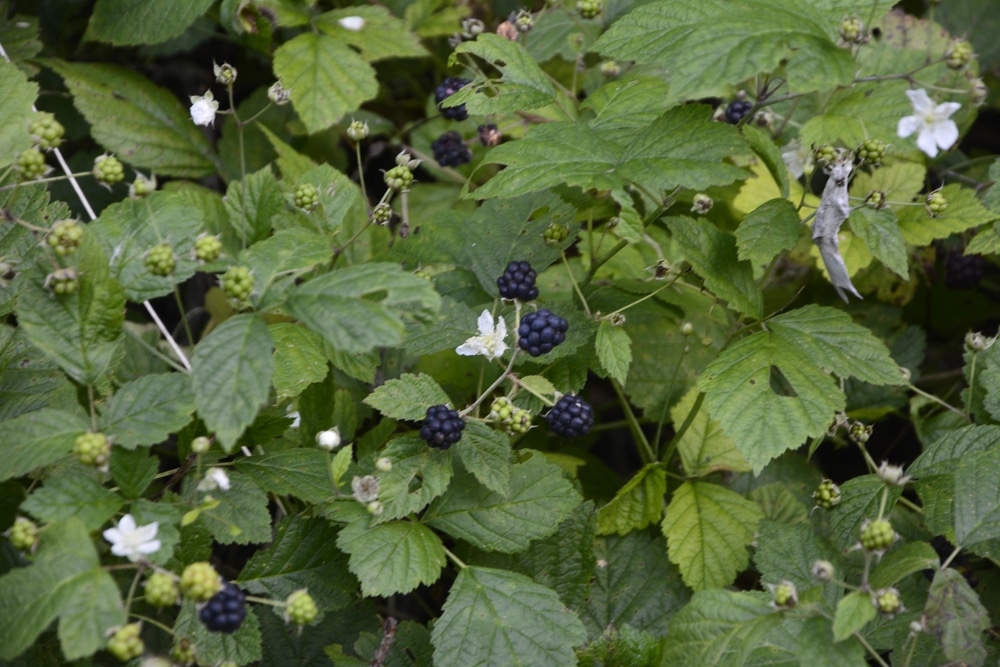Blackberry leaves turning brown results from many sources. Many issues with the plant can be environmental in origin. Other issues like fungal diseases are also more likely to emerge without the right conditions for the plant.
Environmental Factors
A North American native plant, blackberries easily adapt to most conditions and can quickly become overgrown. However, these hardy bushes aren’t impervious to problems. Multiple environmental factors cause blackberry leaves to brown.
Overwatering, underwatering, not getting enough sun, and poor soil quality contribute to blackberry leaves turning brown. Review the parameters for blackberry care below to ensure you’re meeting the plant’s requirements.
- Light: Blackberries require full sun to thrive.
- Soil: While adaptive to most soil types, blackberries prefer acidic to slightly basic soil around 6.0 – 7.0 pH. Soil should also be well-draining.
- Placement: Since blackberries grow aggressively, plant them away from other garden areas in a spot that makes it easy to control excess growth.
- Pruning: Prune blackberries yearly, starting during the second year of growth early in the growing season. Using this method strengthens the canes of the plant.
- Watering: For the first three weeks after planting, water two or three times each week. After that, water them less frequently but increase again during the harvest.
- Mulch: Covering the roots with organic mulch helps retain water, add organic matter to blackberries, and reduce weeds.
- Fertilizer: Fertilize with a 10-10-10 formula fertilizer in early spring annually.
Meeting the requirements for growing these plants helps them stay healthy and prevents problems like leaf scorch. Leaf scorch is one condition that browns leaves, resulting from leaves that cannot retain moisture. Properly care for your blackberry bush to keep conditions ideal and prevent leaf browning.
Fungal Diseases
If the care and placement of your blackberry bush are already ideal, the problem could be a fungal disease. Several diseases can cause blackberry leaves to turn brown. Below are a few of the most common fungus problems in blackberries.
Blackberry Rust
The most apparent symptom of blackberry rust is circular spots of dark purple with yellow pustules forming on the bottom of the leaf. Once enough of these spots form, infected leaves turn brown. Dead leaves fall from the plant, sometimes defoliating an entire blackberry.
Preventative measures can be taken with fungicides, but the only option for dealing with blackberry rust is to remove and destroy infected plants.
Fusarium Wilt
Fusarium wilt first appears on the blackberry cane as black streaks. Wilt attacks the cane first. Once the canes die, leaves quickly turn brown but remain on the plant. This fungal disease kills the plant, usually within a year or two.
Treat by removing dead and infected canes to prevent the spread of the disease. Fungicides aren’t effective on Fusarium wilt, so avoiding infected areas and using clean plants or resistant cultivars is the best way to prevent this issue.
Powdery Mildew
Another fungal disease that develops into patches, powdery mildew causes leaf discoloration. Usually, the color appears more gray than brown, but Powdery Mildew could cause problems in your blackberry plant.
Certain areas are more prone to this disease than others, and there aren’t many means of treating it. If you live somewhere powdery mildew is expected, consider growing resistant cultivars of blackberries.
Orange Rust
If the leaves of your blackberries seem to be turning a bright orange that can sometimes be mistaken for brown, Orange Rust may be the source of the problem. Leaves infected with this rust eventually die and fall from the plant.
Improving air circulation helps prevent orange rust. Improve this by pruning the plant. Fungicides can also treat rust while spores grow on the blackberry bush. This disease doesn’t cause long-term problems when managed.
In Conclusion
Many of the problems that cause blackberry leaves to turn brown can be prevented by picking a spot with the right conditions for your plant. Even issues not caused directly by environmental factors benefit from proper care and may stop the problem from occurring in the first place.

